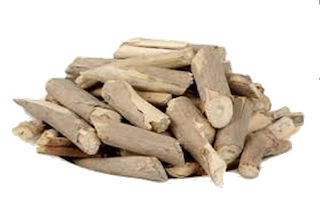
AGNIMANTHA
The plant Agnimantha or Arani as it is commonly known in Kannada is a tree that is commonly used in many preparations of Ayurveda. It is known as Wind Killer in English. The interesting part here is that the woods of the plant were used for to generate fire by rubbing against each other in the past. This is procedure is also in practice even today in certain rituals of Hindus. Medicinally, it is the root and its bark that is commonly used in different systems of Medicine including Ayurveda. In Ayurveda, this is enumerated as one among the Dashamula which is the most prominent group of medicinal herbs that are seen in different medicinal formulations. Eventully the profound use of the plant is the cause for its depletion considerably especially in its natural environment. Hence with a basic need to propagate and preserve the plant, a small video about its general requirements for its cultivation and propagation. This will create awareness along with questions for cultivating it which in turn will result in the preservation and propagation of the plant along with maintaining of constant supply to the demand. Generally it is available wild in the Tropical and sub-tropical regions of the Indian Subcontinent. But it also can be cultivated in certain parts of the country where the environmental are acceptable for its growth.
The details and the description is available in the page with the title AGNIMANTHA in a very elaborate manner. The video which emphasises on the various aspects of the plant especially with respect to its cultivation and its characteristics for identification such that they are preserved for the future generations. Thus, a short and a crisp video is being attached here. This being the second video after AGURU, we will be coming up with such videos of different plants with the same objective. The medicinal details and others with respect to Ayurveda is explained in the page AGNIMANTHA with under the Know your medicinal plants section. There are much more to follow. Hope you all will like it. If yes kindly subscribe and follow our videos in our YOUTUBE CHANNEL. You can also follow at Facebook and in LINKEDIN. Do like it there too and follow us to get many videos of Ayurveda too. Thank you and Happy reading !!!!!!!!!!



Why agnimantha is called dusky fire brand teak and wind killer???
Thanks for the comments and the question.
Primarily the use of the wood was to create fire by rubbing two pieces of the same which is evident through the name Agnimantha and also explains the name fire brand. The plant that is referred with this name is Premna mollisma (A variant of Agnimantha) where the bark is dusky or grey or greyish-white in colour. Hence the English name is to suggest the same. Some references suggest as Dusky fire brand teak basically because it is a tree or Dusty fire brand bark due to the colour of the bark. The opinion is based on the observations and commentaries on Sanskrit names. Still I am open to discussions in this regard.
The english name windkiller refers to Premna integrifolia (A variant of Agnimantha) where probably the functionality of the plant to stop or block the movement of the wind. The phrase “WIND_KILLER” is usually used for the ability to block or stop or divert the wind from blowing or movement. Thus it can be assumed that the plant being busy shrub or a short tree this may have the potential. I don’t see any other suitable answer for this. I am open to any suggestion or comment in this regard.